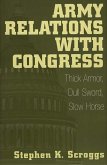Most studies of ancient warfare focus only on the Greeks and the Romans, but this sweeping study covers the whole of the ancient world from Greece and Rome to the Near East, then eastward to Parthia, India, and China. Bradford transports the reader into the midst of ancient battles behind such great leaders as Thutmose III, Ashurbanipal, Alexander, Hannibal, Caesar, and the First Emperor of China. He details the rise and fall of empires, the role of leadership, and the development of tactics and strategy. One sees the clash of peoples: nomads against agricultural societies, infantry against cavalry, as well as the greatest technological change in history-the combination of the composite bow and the chariot.
This readable account analyzes ancient armies in terms of modern military doctrine, allowing the reader to make comparisons between the combatants. Recruitment, for example, varied tremendously with Romans drawing from a limited pool of recruits for service terms of twenty to thirty years and Chinese planners preferring a large pool with short-term service. While various types of governments prepared for and waged war in significantly different ways, Bradford finds that better organization led to success on the battlefield and that, for the most part, societal innovation was more important than technological innovation. The ongoing discussion of the lessons of ancient warfare around the globe will provide valuable insights for interested general readers and military professionals alike.
This readable account analyzes ancient armies in terms of modern military doctrine, allowing the reader to make comparisons between the combatants. Recruitment, for example, varied tremendously with Romans drawing from a limited pool of recruits for service terms of twenty to thirty years and Chinese planners preferring a large pool with short-term service. While various types of governments prepared for and waged war in significantly different ways, Bradford finds that better organization led to success on the battlefield and that, for the most part, societal innovation was more important than technological innovation. The ongoing discussion of the lessons of ancient warfare around the globe will provide valuable insights for interested general readers and military professionals alike.









